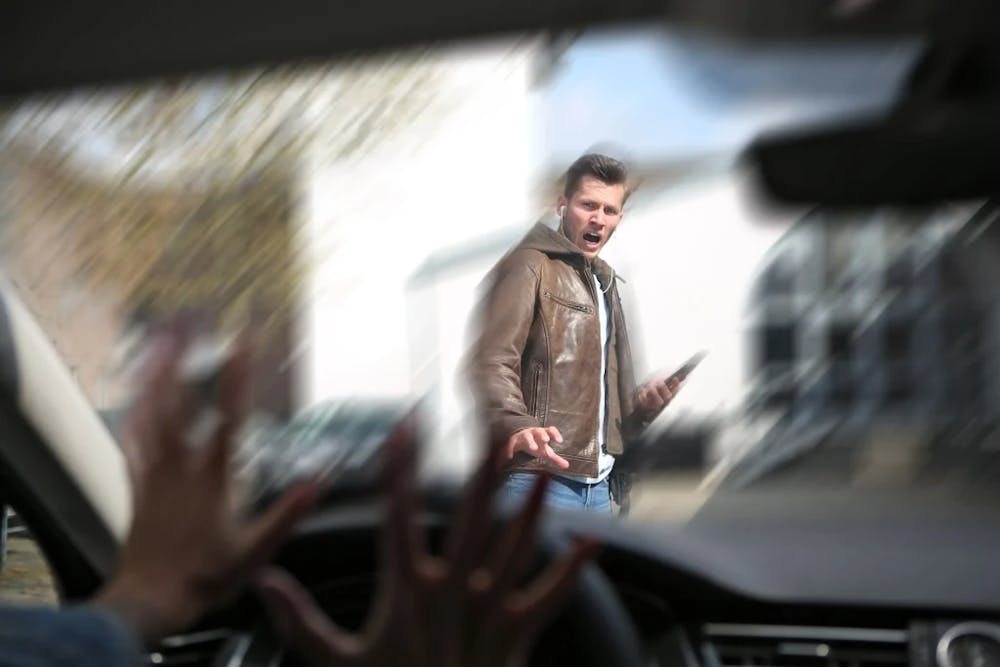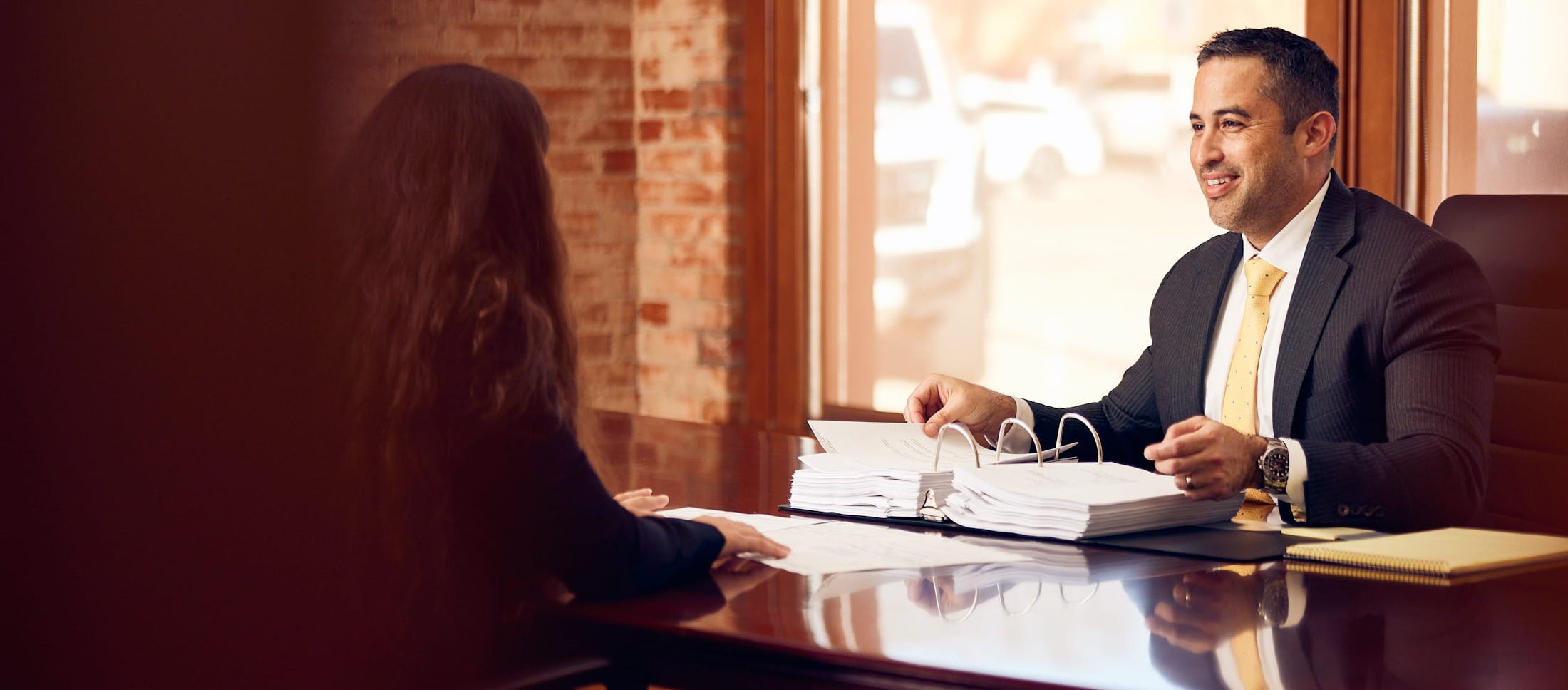- Home
- Personal Injury Lawyer Bryan Tx
- Do I Have A Personal Injury Case If I Was Jaywalking Find Out Now
Do I Have a Personal Injury Case if I Was Jaywalking? Find Out Now!
Jaywalking can be tempting, especially when crossing the street seems like the quickest route to your destination. But have you ever considered the legal implications if you were injured while jaywalking? You might wonder, do I have a personal injury case if I was jaywalking? The issue is more complex than you might think, and understanding your rights in such a situation is crucial. Brian C. Gutierrez understands the legal aspects of jaywalking and its impact on personal injury cases, as well as the role of our experienced attorney team in helping you navigate the process. If you were in a traffic accident and were jaywalking, call us today at 979-271-5338 for a free consultation, and let our experience help you understand the potential avenues for compensation and justice after a jaywalking-related traffic accident.

Jaywalking and Its Legality
Jaywalking, or pedestrian jaywalking, which involves crossing the street outside of designated crosswalks, is a violation of traffic laws in many states. While it may not seem like a serious offense, jaywalking can lead to severe injuries or even death, particularly when pedestrians fail to take precautions such as looking both ways before crossing the street.
So, what happens if youre injured while jaywalking? Can you still pursue a personal injury case to recover compensation for your medical bills and other expenses? The answer depends on various factors, including the specific circumstances of the accident and the laws in your state.
Definition and Common Misconceptions
To clarify, jaywalking is generally defined as crossing the street in an unlawful manner, such as crossing mid-block or beyond an intersection outside of a designated crosswalk. While this might seem like a minor traffic violation, it can have serious consequences, especially if an accident occurs. In such cases, the pedestrian may be held partially responsible for their own injuries and medical bills.
Many people mistakenly believe that if a pedestrian is using a marked or unmarked crosswalk, they always have the right of way. However, this is not always the case. Pedestrians are still expected to exercise due care and obey traffic signals at pedestrian crossings to avoid stepping into the path of oncoming traffic. In most states, drivers must yield the right of way to pedestrians crossing on a marked crosswalk or within an unmarked crosswalk at an intersection.
Legal Consequences of Jaywalking
The legal consequences of jaywalking can include monetary fines and potential civil liability in the event of a pedestrian accident. Fines for jaywalking in major U.S. cities can range from $20 to $250. Beyond the fines, jaywalkers may also face liability for their actions if they are involved in an accident.
In some states, contributory negligence laws apply, which means that if a pedestrian is found to be even one percent at fault for an accident, they may not be able to obtain any compensation. This can be a harsh rule, but it is important to be aware of the potential legal consequences of jaywalking and take necessary precautions to ensure your safety.
Establishing Fault in Pedestrian Accidents Involving Jaywalking
Determining fault in pedestrian accidents involving jaywalking is a complex process that takes into account various factors, such as traffic laws, driver behavior, and pedestrian actions. Jaywalking can play a significant role in fault determination, potentially leading to reduced compensation for the injured pedestrian. However, other factors, such as due care, can also impact fault determination.
Bear in mind that each case is unique, and the specific circumstances of where the accident occurred will ultimately ascertain the degree of fault for both the pedestrian and the driver. Consulting with Brian C. Gutierrez can be invaluable in navigating pedestrian accident cases and ensuring a fair outcome for all parties involved.
Factors to Consider
Factors such as speed, visibility, and intoxication can significantly impact fault determination in jaywalking accidents. For instance, if a driver is traveling at an excessive speed and collides with a pedestrian, the driver may be considered at fault for failing to prevent the accident. However, if the driver was driving reasonably and could not have avoided the pedestrian, the fault may lie with the pedestrian.
Visibility is another key factor in determining fault, as poor lighting or other conditions can hinder drivers from seeing jaywalking pedestrians. Similarly, the intoxication of either the driver or pedestrian can influence fault determination, with both parties potentially bearing partial fault under contributory negligence laws.
Shared Fault and Its Impact on Compensation
Shared fault in a jaywalking personal injury case can reduce the compensation a pedestrian may receive for their pedestrians injuries. Under comparative negligence laws, if both parties are partially at fault for an accident, then neither party can recover damages. This means that even if a pedestrian was injured while jaywalking, they may still be able to seek damages from the driver if the driver was found to be at fault, such as by speeding or driving under the influence. The jury may assign a percentage of fault to the claimant. If this happens, any damages awarded will be reduced accordingly.
For this reason, its highly recommended to consult with Brian C. Gutierrez, who can guide you through the complexities of shared fault and ensure that you receive fair compensation for your injuries.
Comparative Negligence and Its Role in Jaywalking Cases
Comparative negligence is a legal doctrine that assesses the degree of fault of each party to determine the amount of damages the plaintiff can recover from other at-fault parties. In jaywalking cases, the comparative negligence law can affect the amount of compensation a pedestrian can recover, depending on their level of fault.
The pedestrian may only be able to recover $30,000 if a judge or jury determines that they are 40% at fault for the incident whilst the driver is 60% at fault. For example, if the injuries sustained total $50,000. The specific laws and thresholds for comparative negligence vary by state, thus its recommended to consult with Brian C. Gutierrez to comprehend the implications in your jurisdiction.
Insurance Coverage for Jaywalking Pedestrians
Insurance coverage for jaywalking pedestrians may be available through auto or health insurance policies. In most cases, the drivers liability insurance will provide coverage for the medical expenses and damages of the injured pedestrian, even if the pedestrian was jaywalking. However, the compensation may be reduced if the pedestrian is found to have contributed to the accident.
Awareness of potential insurance coverage options available to you in the event of a jaywalking accident is crucial. Consulting with Brian C. Gutierrez can help you navigate the complexities of insurance coverage and ensure that you receive the compensation you deserve.
How an Experienced Attorney Can Help with Your Jaywalking Personal Injury Case
Navigating the legal process of a jaywalking personal injury case can be daunting, but an experienced attorney can make all the difference. By gathering evidence, negotiating with insurance companies, and representing you in court, a skilled attorney can help you obtain the compensation you deserve for your injuries.
No matter the circumstances surrounding your jaywalking accident, having Brian C. Gutierrez by your side to guide you through the process and advocate for your rights is of utmost importance. Dont face this complex legal challenge alone contact us to help you every step of the way.
Evidence Collection and Investigation
In a jaywalking personal injury case, evidence is crucial in determining the facts and assessing the degree of fault for both parties involved. A pedestrian accident attorney can utilize various sources of evidence to build a strong case on your behalf, including:
- Eyewitness accounts
- Traffic camera footage
- Police reports
- Accident reconstructionists
- Medical records
Comprehensive investigations and robust evidence collection can significantly influence your case, aiding in proving negligence and establishing fault. An experienced attorney will know how to gather the necessary evidence and use it effectively to build a compelling case in your favor.
Negotiating with Insurance Companies
Insurance companies may attempt to reduce the amount of compensation they provide by employing various strategies, such as:
- Denying or delaying the claim
- Asserting that the claim is not covered under the policy
- Subjecting the victim to surveillance
- Providing low settlement amounts
Skilled negotiation with insurance companies can help ensure fair compensation for jaywalking pedestrians, especially when an injured pedestrian recovers compensation.
An experienced attorney at a law firm can:
- Evaluate the value of the case
- Send a demand letter
- Attempt to negotiate a settlement
- Represent the client in court if necessary
By having Brian C. Gutierrez on your side, you can level the playing field and ensure that your rights are protected throughout the negotiation process.
Litigation and Court Representation
If necessary, an attorney can represent a jaywalking pedestrian in court to fight for the compensation they deserve. This involves providing legal defenses, assessing the degree of fault of both parties and seeking compensation through the drivers liability insurance.
An attorneys responsibilities include gathering evidence, negotiating with insurance companies, and standing up for their clients rights in court. With an experienced attorney by your side, you can have confidence that your case is being handled professionally and efficiently, giving you the finest chance at receiving the compensation you deserve.
Safety Tips for Pedestrians and Drivers

Both pedestrians and drivers should adhere to safety tips to reduce accidents and ensure everyones well-being its crucial. Pedestrians should use crosswalks and adhere to traffic signals, while drivers should remain vigilant and be on the lookout for potential hazards, including pedestrian traffic and jaywalkers.
In addition to obeying traffic laws, pedestrians and drivers should also stay alert and be aware of their surroundings. By taking these simple precautions, we can all contribute to safer streets and prevent accidents involving jaywalking pedestrians.
How Brian C. Gutierrez Can Help You
Brian C. Gutierrez, an experienced personal injury attorney, can help you with your jaywalking personal injury case by providing legal advice, representation, and support on a contingency fee basis. With over 15 years of trial law experience and having handled more than 1,000 personal injury cases in Texas, Brian Gutierrez is well-equipped to guide you through the complex legal process and fight for the compensation you deserve.
Contact our law office at 979-271-5338 for a free consultation to discuss your case and learn how Brian C. Gutierrez can help you navigate the challenges of a jaywalking personal injury claim.
Frequently Asked Questions
Is jaywalking always illegal?
In most states, jaywalking is illegal, though some states do not have a statute that explicitly outlaws it.
What types of evidence can be used in a jaywalking personal injury case?
Eyewitness accounts, traffic camera footage, police reports, accident reconstructionists, and medical records can all be used as evidence in a jaywalking personal injury case.
Talk to Us Today
Get a free case evaluation

